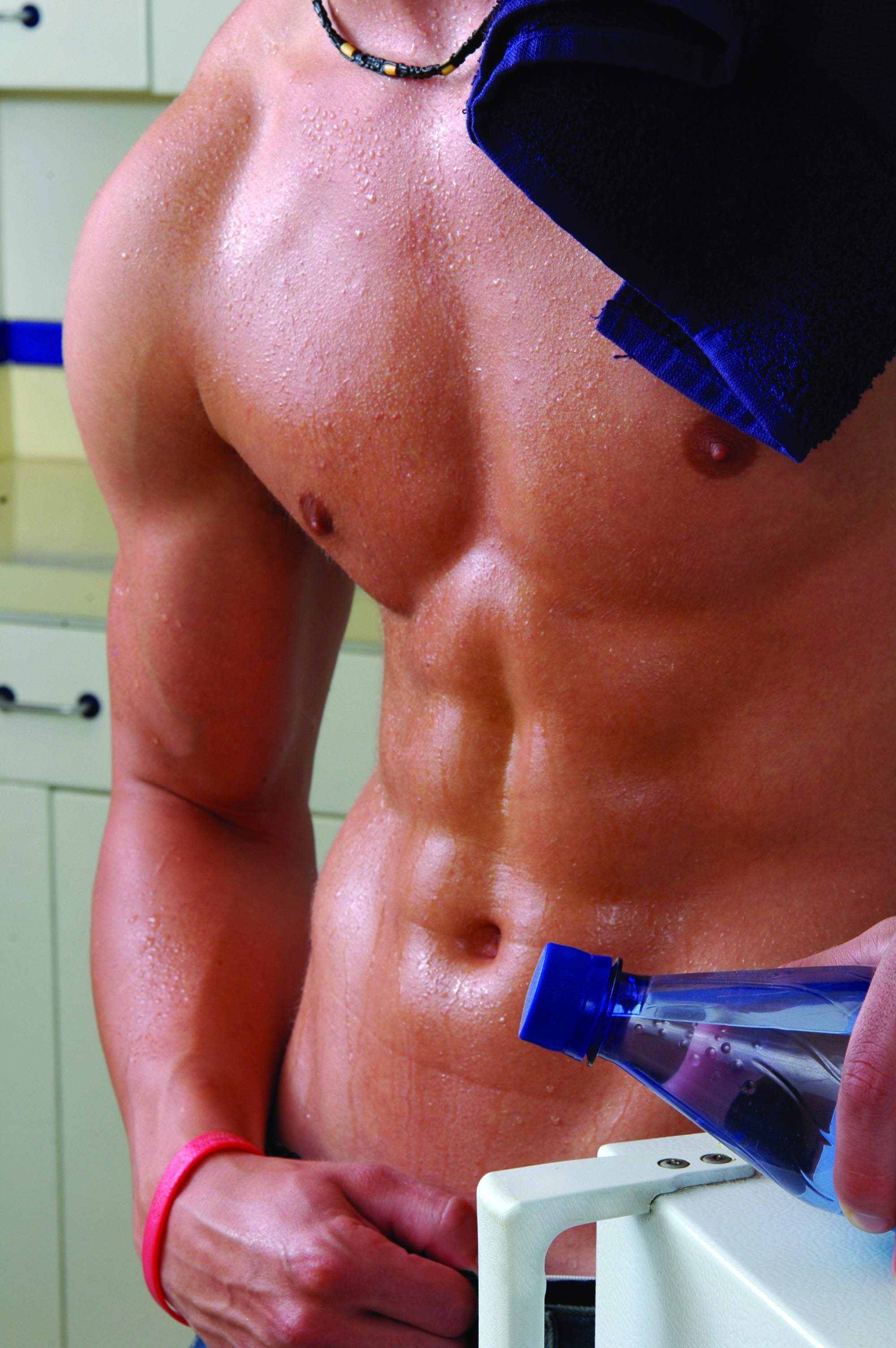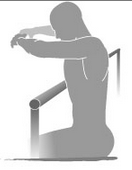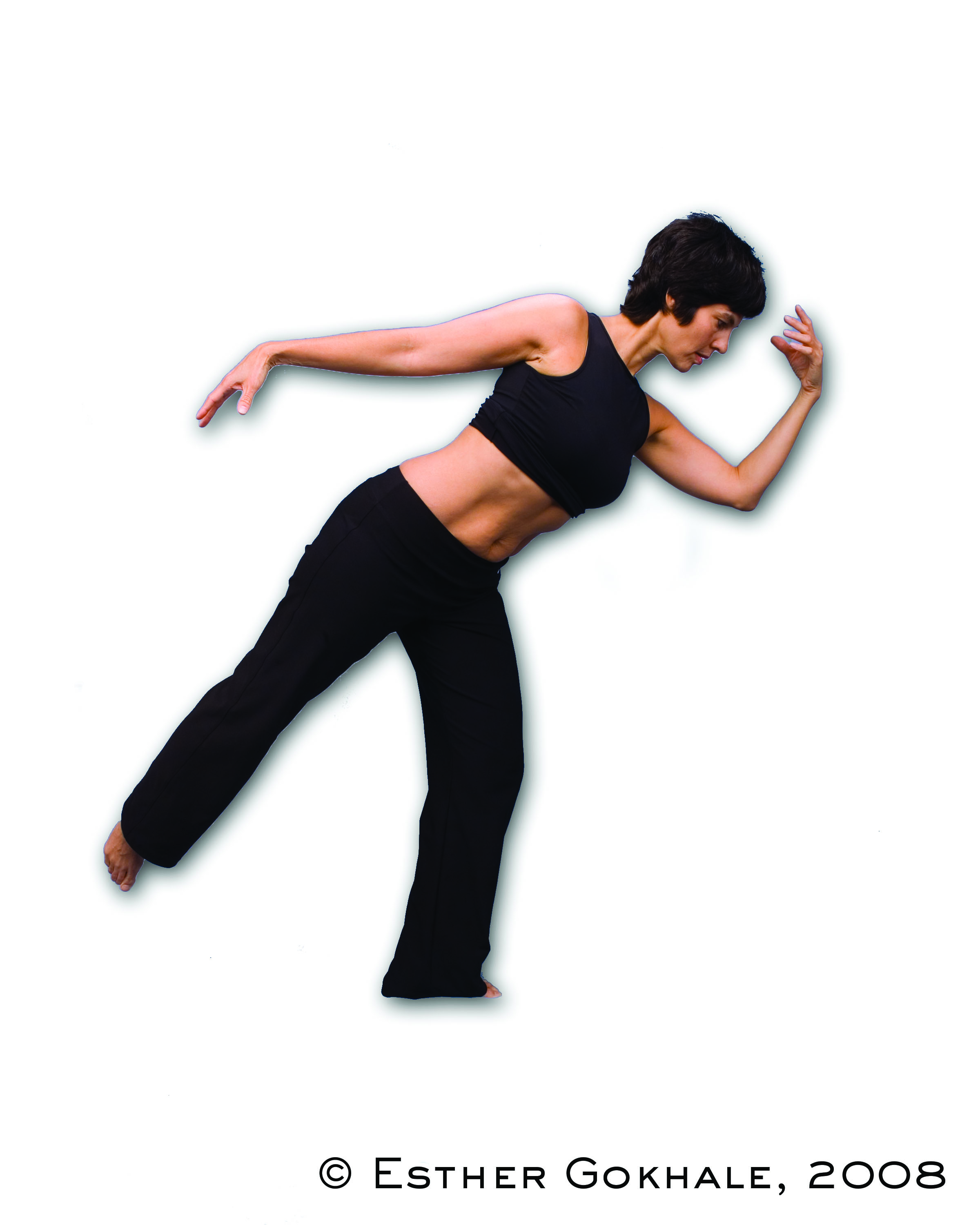Use Your Core to Do your Chore?
I generally avoid the word “core,” because most people understand it to mean “tuck your pelvis and tighten every abdominal muscle you can find.” This is neither natural nor healthy. Tucking the pelvis compresses the L5-S1 disc in the worst possible direction (pushing the disc contents backwards against the spinal nerve roots), throws off the balance of the entire spine, challenges the hip joints, puts the glutes in a position of mechanical disadvantage (setting you up for a flat or saggy butt) and detracts from your appearance.

These men, who have surely done numerous crunches / situps, show the resulting default of a hunched upper body

So what should you do when you pick up your grandkid? Or are in a bumpy bus? Twist to do the samba? Or are in a situation where your spine will be stressed, compressed, and compromised if you do nothing? The answer is maintain the shape of your spine, lengthen it, and brace it. When you are challenged by weight, vibration, or twist is not the time to additionally challenge the spine by changing its shape. If the spine’s baseline is J-shaped (discussed extensively throughout my book, 8 Steps to a Pain-Free Back), then it needs to stay J-shaped when there is external stress on it. This is precisely the time when you don’t want to tuck your pelvis and damage your L5-S1 and other discs and nerves. A longer J and a stronger J are healthy changes to meet the additional challenge; an S is not.
I use the term “inner corset” to describe the specific brace of muscle responsible for making you thinner and taller and more ready to face challenges to your spine.

The challenge of carrying a load on the head surely goes back to the beginnings of our species as upright creatures. A load well positioned on the head automatically evokes the inner corset.
The muscles that constitute the inner corset are the internal obliques, the external obliques, the transversus abdominis, and the rotatores (deep in the back). Note that rectus abdominis is missing from this list. In modern ab workouts, for example crunches, we tend to overlook the ab muscles that most need strengthening, and focus our attention on rectus abdominis, the least relevant ab muscle when it comes to architectural support for the spine. It is, in fact, counterproductive to overly tense rectus abdominis as that will tuck your pelvis – a bozo no-no for posture.
The inner corset is what people in non-industrial cultures use when they need to brace themselves against an external force.

Healthy form with inner corset engaged to do a challenging (and questionable!) physical task.
In Chapter 5 (available as a free download here on the website) I describe how to engage the precise combination of abdominal and back muscles that constitute the inner corset. It involves imagining a high shelf towards which you are reaching and a bar at chest height you are lengthening up and around. Without imagining the bar that you are curving around, most people tend to arch back (sway) when they reach upwards.

Imagine a bar at chest height while reaching upwards to find the precise combination of torso muscles that constitute the inner corset.
This puts undue pressure on the low back and is the reason that so many people have trouble putting luggage into overhead compartments, serving in tennis, and doing other overhead tasks. If you find the right direction to reach up without arching your back, all the actions that previously caused you trouble now become fortifying exercises. This is tricky for many people to find on their own. It is one of many techniques we teach in our Foundations course that greatly benefits from having hand on guidance by a trained teacher. If you are on your own, place your fingertips on the small of your back to make sure you aren’t arching without realizing it. A friend or family member may be able to check this better than you can on yourself.
The best way to strengthen your inner corset is to use it. When should you use it?
- Whenever your spine is challenged by impact, weight bearing, distortion (especially twist), or vibration. Your choices in these situations are to either use (and strengthen) your inner corset muscles, or damage your spine. Which will you choose?!
- On and off during the day to exercise your muscles and practice the pattern so that when you need it, it won’t be a production to find it.
- If you have an injury or inflamation (e.g. with a herniated disc or lateral stenosis), it would be good to engage the inner corset all day long. In the beginning you won’t have the strength to this very much. I recommend you use an external corset as a supplement when you run out of steam engaging your inner corset. The external corset should only be used as a backup and a training device, and not as a crutch. You want your muscles to become stronger, not weaker, with time.
I use my internal corset whenever I dance, run, or swim. In this way, I not only protect my spine from wear and tear, but also get that much more benefit from the time spent exercising.

Dancing with the inner corset protects me from spinal wear and tear. It helps stability, powers my movements, and gives me a better workout.
What are some of the ways you like to strengthen your abs?

Comments
To see dancers using their
To see dancers using their inner corset, I recommend the Brazilian company Grupo Corpo. Lots of videos on YouTube.
Add New Comment
Login to add commment
Login